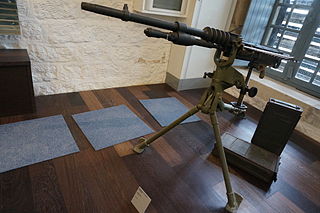 W
WAstra Unceta y Cía was a Spanish weapons manufacturer founded on July 17, 1908, under the name Esperanza y Unceta by Juan Esperanza and Pedro Unceta. Initially based in Eibar, the centre of the Basque arms industry, the company moved in 1913 to Guernica.
 W
WThe Chauchat-Ribeyrolles 1918 submachine gun is a French prototype automatic weapon.
 W
WThe F-1 grenade is a hand grenade mass-produced by France during and after WW1, used en masse in the majority of European countries throughout the First and Second World Wars.
 W
WThe French Nail were locally fabricated and converted bayonets, knives and stabbing weapons for use in the First World War. These were crude stabbing spikes made by adding a point to a steel stake which had its rearmost section heated and bent into a crude handle.
 W
WThe Fusil Automatique Modèle 1917, also called the RSC M1917, was a gas-operated, semi-automatic rifle placed into service by the French Army during the latter part of World War I. It was chambered in 8mm Lebel, the rimmed cartridge used in other French Army infantry weapons of the time. In total, the French national armories, primarily Manufacture d'armes de Saint-Étienne (MAS) and Manufacture Nationale d'Armes de Tulle (MAT), manufactured 86,000 RSC M1917 rifles until production ended in late November 1918. However, very few examples have survived in fully-functional, semi-automatic condition and those have become highly sought-after collectibles.
 W
WThe Hotchkiss machine gun was any of a line of products developed and sold by Hotchkiss et Cie,, established by United States gunsmith Benjamin B. Hotchkiss. Hotchkiss moved to France and set up a factory, first at Viviez near Rodez in 1867, then at Saint-Denis near Paris in 1875 manufacturing arms used by the French in the Franco-Prussian War.
 W
WThe Mle 1914 Hotchkiss machine gun chambered for the 8mm Lebel cartridge became the standard machine gun of the French Army during the latter half of World War I. It was manufactured by the French arms company Hotchkiss et Cie, which had been established in the 1860s by American industrialist Benjamin B. Hotchkiss. The gas-actuated Hotchkiss system was first formulated in 1893 by Odkolek von Ujezda and improved into its final form by Hotchkiss armament engineers, American Laurence Benét and his French assistant Henri Mercié.
 W
WThe Lebel Model 1886 rifle also known as the "Fusil Mle 1886 M93", after a bolt modification was added in 1893, is an 8 mm bolt action infantry rifle that entered service in the French Army in 1887. It is a repeating rifle that can hold eight rounds in its forestock tube magazine, one round in the transporter plus one round in the chamber. The Lebel rifle has the distinction of being the first military firearm to use smokeless powder ammunition. The new propellant powder, "Poudre B," was nitrocellulose-based and had been invented in 1884 by French chemist Paul Vieille. Lieutenant Colonel Nicolas Lebel contributed a flat nosed 8 mm full metal jacket bullet. Twelve years later, in 1898, a solid brass pointed (spitzer) and boat-tail bullet called "Balle D" was retained for all 8mm Lebel ammunition. Each case was protected against accidental percussion inside the tube magazine by a primer cover and by a circular groove around the primer cup which caught the tip of the following pointed bullet. Featuring an oversized bolt with front locking lugs and a massive receiver, the Lebel rifle was a durable design capable of long range performance. In spite of early obsolete features, such as its tube magazine and the shape of 8mm Lebel rimmed ammunition, the Lebel rifle remained the basic weapon of French infantry during World War I (1914–1918). Altogether, 3.45 million Lebel rifles were produced by the three French state factories between 1887 and 1916.
 W
WThe Arbalète sauterelle type A, or simply Sauterelle, was a bomb-throwing crossbow used by French and British forces on the Western Front during World War I. It was designed to throw a hand grenade in a high trajectory into enemy trenches. It was initially dismissed by the French Army but General Henri Berthelot thought it had practical value.
 W
WThe Viven-Bessières rifle grenade, named after its inventors ·, also known as "VB grenade", and officially referred to as the "Viven-Bessières shell" in the French Army instruction manual, was an infantry weapon in use with the French Army from 1916 onwards.